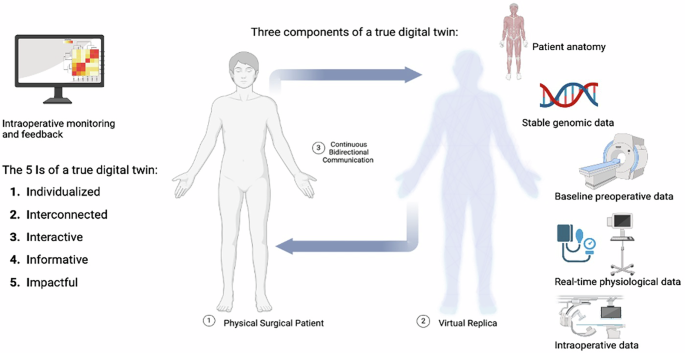Machine learning-based diagnostic model for neonatal intestinal diseases in multiple centres: a cross-sectional study protocol
Machine learning-based diagnostic model for neonatal intestinal diseases in multiple centres: a cross-sectional study protocol
Neonatal intestinal diseases often have an insidious onset and can lead to poor outcomes if not identified early. Early assessment of abnormal bowel function is critical for timely intervention and improving prognosis, underscoring the clinical importance of reducing mortality related to these conditions through rapid diagnosis and treatment. Bowel sounds (BSs), produced by intestinal contractions, are a key physiological indicator reflecting intestinal function. However, manual clinical assessment of BSs has limitations in terms of consistency and interpretative accuracy, which restricts its clinical application. This study aims to develop an machine learning-based diagnostic model for neonatal intestinal diseases using BS analysis and to compare its diagnostic accuracy with that of manual clinical assessment.
This diagnostic study employs a cross-sectional design. The case group includes neonates diagnosed with intestinal diseases (using clinical diagnosis as the gold standard), such as neonatal necrotising enterocolitis (NEC), food protein-induced allergic proctocolitis, and other intestinal conditions (eg, intestinal obstruction, midgut volvulus, congenital megacolon). The control group will be established using frequency matching, stratified by gestational age and postnatal age. Based on the distribution of each stratum in the case group, neonates without intestinal diseases who were hospitalised during the same period will be randomly selected in proportion from the corresponding strata. BSs will be collected using a 3M stethoscope (Littmann 3200). The study will occur in two phases. In the first phase (July 2024 to July 2025), participants from West China Second University Hospital will be randomly divided into a training cohort (for model development with 10-fold cross-validation) and an internal validation cohort in a 7:3 ratio. The second phase (July 2025 to July 2026) will involve external validation, with patients from Sichuan Provincial Children’s Hospital and Shenzhen Children’s Hospital. Clinical diagnosis will serve as the gold standard, and diagnostic outcomes between the machine learning-based model and manual clinical assessment by physicians of varying experience levels will be compared.
Ethical approval has been obtained from the Medical Ethics Committee of West China Second University Hospital (Registration No.: 2023SCHH0021), Sichuan Provincial Children’s Hospital (Registration No.: 2021YFC2701704) and the Shenzhen Children’s Hospital (Registration No.: 2021015). Written informed consent will be collected from all participants prior to BS collection. Study findings will be disseminated through conferences and publications in peer-reviewed journals.
ChiCTR2400086713.
http://creativecommons.org/licenses/by-nc/4.0/
This is an open access article distributed in accordance with the Creative Commons Attribution Non Commercial (CC BY-NC 4.0) license, which permits others to distribute, remix, adapt, build upon this work non-commercially, and license their derivative works on different terms, provided the original work is properly cited, appropriate credit is given, any changes made indicated, and the use is non-commercial. See: http://creativecommons.org/licenses/by-nc/4.0/.
If you wish to reuse any or all of this article please use the link below which will take you to the Copyright Clearance Center’s RightsLink service. You will be able to get a quick price and instant permission to reuse the content in many different ways.
The neonatal period represents a critical window for child survival globally, marked by the highest rates of infant mortality.1 Among the causes of neonatal mortality and long-term complications, neonatal intestinal diseases are particularly significant.2 These diseases encompass a range of disorders with complex aetiologies, including neonatal necrotising enterocolitis (NEC), food protein-induced allergic proctocolitis (FPIAP), and various surgical intestinal conditions such as intestinal volvulus and gastrointestinal perforation. In their early stages, these diseases can be challenging to detect, often progressing to severe complications if untreated. For example, NEC occurs in 2%–5% of neonatal intensive care unit (NICU) admissions, with extremely low birth weight (ELBW) infants experiencing even higher incidence rates of 4.5%–8.7%. The mortality rate for NEC is substantial, ranging from 20%–30%, and in ELBW infants, it can reach as high as 30%–50.9%.3 4 Early diagnosis of these intestinal diseases is crucial, as timely intervention can prevent progression, ultimately reducing neonatal mortality.5
Abdominal distension and vomiting are important early warning signs of neonatal intestinal diseases; however, their causes are numerous, making it challenging to rely solely on these symptoms to determine the presence of an intestinal disorder.6 In neonates, abdominal distension and vomiting can be physiological, occurring in healthy infants without underlying intestinal disease. However, these symptoms may also indicate early stages of intestinal diseases such as NEC, FPIAP, or surgical emergencies like intestinal volvulus and gastrointestinal perforation.7 8 Digestive symptoms like abdominal distension and vomiting, which appear in the early stages of intestinal diseases, can be easily mistaken for normal physiological processes. This overlap makes differentiation challenging, complicating early clinical diagnosis of intestinal diseases.
The current gold standard for diagnosing neonatal intestinal diseases typically involves radiological methods such as abdominal X-rays, CT scans and gastrointestinal contrast studies, which are performed after clinical symptoms appear.9 However, transporting critically ill neonates to the radiology department may exacerbate their condition. Cases suspected of intestinal disease often require continuous monitoring to assess disease progression and treatment effectiveness, which exposes the neonates to considerable radiation and risks associated with repeated blood sampling from punctures, posing potential safety hazards.10 Bedside ultrasound, a new diagnostic method, shows promise as an alternative to radiological exams but is limited by operator skill and the need for specific positioning of the neonate.11 Furthermore, the effectiveness of current diagnostic methods is constrained by the availability and quality of medical services and examination scheduling. Therefore, there is an urgent need in clinical practice for a simpler, non-invasive method to screen for intestinal diseases. Given the risk of rapid deterioration in neonatal intestinal diseases, implementing efficient, non-invasive monitoring techniques for early-stage diagnosis of functional disorders is critically important for timely intervention and improved outcomes.
Bowel sounds (BSs), generated by intestinal contractions, reflect the functional state of the intestines and serve as an important physiological indicator.12 Variations in the intensity or frequency of BSs are associated with gastrointestinal functions such as food intake and bowel movements, and are closely related to intestinal diseases. Consequently, BSs are widely used in diagnosing and assessing the progression of intestinal diseases.13 14 In neonates presenting with abdominal distension and vomiting, weakened BSs are a key clinical sign.6 Due to their simplicity, accessibility, and timeliness, BSs hold considerable potential for use in diagnosing neonatal intestinal diseases.
Currently, manual clinical assessment remains the primary method used in clinical practice to assist in diagnosing neonatal intestinal diseases. However, this approach has notable limitations. First, there is no standardised protocol for BS auscultation: a comprehensive database of BSs is lacking, and there are no unified methods for auscultation or established criteria for evaluating results, nor are there standardised approaches for quantitative analysis. Second, clinical practitioners often rely on qualitative judgments informed by personal experience, making diagnostic accuracy dependent on the physician’s expertise. This subjectivity can lead to missed diagnoses if important diagnostic cues in BSs are overlooked. Third, auscultation lacks traceability: physicians typically make brief written notes based on their impressions during auscultation, and BS signals cannot be preserved for future review. This absence of traceable clinical records significantly reduces the diagnostic value of BSs.
Neonatal BSs differ from those of adults, typically presenting as weaker sounds, higher frequencies, and shorter durations, since the neonatal intestinal system is still immature at birth. Consequently, accurate auscultation of neonatal BSs requires considerable skill, yet the lack of standardised reference systems increases the likelihood of misjudgements and missed diagnoses. The relationship between neonatal BS characteristics and intestinal function remains unclear, and whether specific BSs correspond to various neonatal intestinal diseases is still uncertain due to limited research.
Advances in artificial intelligence (AI) have opened new avenues for BS research. Early studies have mainly focused on developing BS signal collection devices, exploring analysis techniques and applying these approaches in preliminary clinical settings. The use of advanced acoustic sensors for collecting and analysing BSs has established a technical foundation for broader clinical applications.15 In particular, advancements in wearable sensors, 5G and modern communication technologies have paved the way for innovative digital stethoscopes, offering new possibilities for real-time BS monitoring.16 Furthermore, AI-driven analysis methods, such as convolutional neural networks (CNN) and deep learning models, now enable quantitative analysis of BS signals, allowing for the extraction of key parameters related to intestinal function.17–19 The integration of AI-based BS analysis offers a novel approach for digital and intelligent detection of intestinal diseases.20
This project aims to address the limitations of manual clinical assessment by exploring the diagnostic potential of machine learning-based BS analysis for neonatal intestinal diseases. We will collect high-quality neonatal BSs using a 3M stethoscope, applying noise reduction techniques to enhance signal quality. A machine learning diagnostic model will then be developed and compared with manual clinical assessment to assess its feasibility for clinical application.
The primary objective of this study is to develop a machine learning-based diagnostic model for neonatal intestinal diseases using BSs. The hypothesis of this study is that inputting collected BSs into this model will enable accurate evaluation and diagnosis of intestinal diseases with high sensitivity and specificity. The secondary objective is to assess the performance of machine learning-based model in comparison to manual clinical assessment. We hypothesise that the diagnostic model will demonstrate superior specificity and sensitivity in diagnosing neonatal intestinal diseases compared with manual clinical assessment.
This study will be conducted in the NICUs of three tertiary care centres in China: West China Second University Hospital of Sichuan University, Sichuan Provincial Children’s Hospital, and Shenzhen Children’s Hospital. These hospitals provide care to a large, diverse population of neonates from both urban and rural areas across Southwest and South China, ensuring a representative sample. This study employs a cross-sectional diagnostic design. The case group will consist of all hospitalised neonates newly diagnosed with intestinal diseases, with clinical diagnoses (eg, NEC, FPIAP, intestinal obstruction, midgut volvulus and congenital megacolon) serving as the reference standard. To minimise potential confounding, controls were selected using frequency matching based on gestational age (categorised as <28, 28–32 and >32 weeks) and days of life (0–3, 4–7 and >7 days). For each stratum, controls were randomly selected from hospitalised neonates without intestinal disease, in proportion to the distribution of cases in that stratum.
NEC primarily presents clinically with abdominal distention, vomiting, diarrhoea and blood in the stool. Shock or multiple organ failure may occur. Abdominal X-ray typically shows pneumatosis intestinalis, which is characteristic of the condition. Its staging is based on the Bell-NEC classification system.21
Food protein-induced proctocolitis in neonates typically presents with fresh blood streaks, spots, or bloody mucus in the stool. Vomiting, abdominal distention, and diarrhoea may also occur. The general condition of the infant is usually stable. Diagnosis relies on identifying allergy risk factors, clinical symptoms, the relationship with feeding, results of diagnostic elimination trials, and excluding other related diseases.22
Intestinal obstruction refers to a blockage of the intestinal tract that prevents the normal passage of intestinal contents. In the neonatal period, it commonly presents with symptoms such as abdominal distension, vomiting (typically bilious) and failure to pass meconium or difficulty in defecation. Midgut volvulus is a severe form of congenital intestinal malrotation. Anatomical abnormalities during embryonic development, including incomplete rotation and fixation of the midgut, cause variations in intestinal positioning and incomplete mesenteric attachment, leading to intestinal malrotation. The intestine twists around the superior mesenteric artery, causing midgut volvulus. Clinically, it presents with frequent vomiting, abdominal pain, and even intestinal necrosis. Diagnosis is made through clinical symptoms and characteristic ‘whirlpool sign’ on abdominal imaging.23
Congenital megacolon is a common enteric neuronal developmental disorder. In neonates, it is characterised by delayed passage of meconium, vomiting and feeding difficulties. Digital rectal examination may reveal explosive-like defecation. Diagnosis in the neonatal period primarily relies on rectal mucosal suction biopsy or conservative treatment with regular follow-up.24
Neonates will be excluded if they meet any of the following criteria:
This study will follow the ethical principles outlined in the Declaration of Helsinki and written informed consent form before data collection begins.
The study will be conducted in two phases.
Phase 1: Model development and internal validation (July 2024 to July 2025)
In this initial phase, participants will be randomly assigned to a training cohort and an internal validation cohort in a 7:3 ratio. The training cohort will be used to develop the diagnostic model through 10-fold cross-validation, optimising its performance. The internal validation cohort will then assess the model’s accuracy within the initial population.
Phase 2: External validation (July 2025 to July 2026)
The second phase will involve external validation with new patient data from Sichuan Provincial Children’s Hospital and Shenzhen Children’s Hospital. Independent researchers—who were not involved in the model’s development—will use the diagnostic model to evaluate patients, with clinical diagnoses serving as the gold standard. Additionally, results from the model-based diagnoses will be compared with those from manual clinical assessment conducted by physicians of varying experience levels to assess differences in diagnostic accuracy and outcomes. Study flow chart is shown in figure 1.
During follow-up, if a hospitalised neonate develops symptoms such as abdominal distension or vomiting, BSs are to be recorded within 24 hours of symptom onset. If the infant is clinically managed with fasting, BSs should be recorded once daily during the fasting period until the initiation of enteral feeding, at which point data collection is discontinued. Abdominal distension is defined as an abnormal enlargement of the abdomen due to retention of gas, fluids or faeces within the gastrointestinal tract, or due to pathological accumulation of fluid within the abdominal cavity (eg, ascites, haemorrhage), with or without visible abdominal wall veins, shiny skin or observable intestinal peristalsis.25 Vomiting in neonates refers to the reflexive expulsion of gastric or intestinal contents in a retrograde fashion through the mouth.26 Currently, there is no standardised duration for BS recording. In the study by Burne et al, a recording duration of 60 s was used.18 Given that the 3M Littmann 3200 stethoscope allows a maximum recording time of 2 min, we selected 2 min as the recording duration for our data collection. Due to the relatively small abdominal surface area in neonates and potential limitations such as skin injury or stoma formation, certain regions may be inaccessible for recording. The classical nine-region abdominal division may lead to overlapping areas; therefore, we adopted a simplified six-region method. During data collection, any one of the six regions with intact, exposed, and unobstructed skin was selected for BS recording. Each subject’s BS are recorded for a minimum of 2 min using a 3M Littmann 3200 stethoscope, focusing on six abdominal regions: upper left, middle, lower, and upper right, middle, and lower. Studies have shown that sounds from the stomach, ileum and lower abdomen provide the most valuable data.27 According to the criteria developed by John Rogers' team, frequencies above 120 Hz are considered BS and frequencies from 0 to 120 Hz are considered heart sounds or breath sounds. Stethoscope data can be labelled and uploaded to a designated website or downloaded to a mobile device for local storage. Outline of BSs recording and storage is shown in figure 2. The following BS data is filtered out:
The research team will also collect clinical information for each neonates, including maternal diseases and medications, gestational age, birth weight, gender, postnatal age, underlying medical conditions, specific data collection time points, abdominal clinical characteristics and laboratory test results.
The generation of BSs is a complex physiological process involving various components of the digestive system. As intestinal contents (including gas, liquid and semisolid chyme) move through the intestines, they collide with the intestinal walls, causing vibrations in the intestinal walls. These vibrations are transmitted to the abdominal wall and captured by the stethoscope, producing what we recognise as BSs. The characteristics of BSs may vary based on factors such as the type of intestinal contents, the degree of intestinal distention, and the rate of peristalsis. Clinically, a segment of BSs is defined as multiple BSs that occur at the end of a complete intestinal peristalsis.
Windowing: A Hamming window is applied to smooth the frame edges and reduce edge effects.
This study selects features based on the unique characteristics of BSs, including short-time zero crossing rate, short-time energy, spectral centroid, spectral bandwidth, spectral rolloff, chroma feature, spectral bandwidth, Mel-frequency cepstral coefficients (MFCC), and tonnetz. These features aim to provide a comprehensive multidimensional feature vector extraction across the time domain, frequency domain and time-frequency domain.
For MFCC, we have implemented a series of modifications and innovations to enhance the accuracy of the diagnosis of gastrointestinal disorders based on the discrimination of BSs. These include adjustments to the frequency range of the Mel filter bank, dynamic compression, random frame shifting and the application of ascending powers of these treatments.
The extracted features are averaged across time frames and returned as a one-dimensional array for feature concatenation and fusion. Each audio file’s feature vector is stored in a list.
This study aims to develop a gastrointestinal disease diagnosis and classification model that combines a Random Forest (RF) classifier with a BERT (Bidirectional Encoder Representations from Transformers)-inspired transformer neural network. The RF model takes the fused BS features as input to determine the presence of gastrointestinal disease, while the BERT-inspired transformer network performs a multi-class classification to diagnose four specific gastrointestinal diseases.
This study used an RF model to diagnose intestinal diseases in newborns. RF classifies by combining the results of multiple trees, which helps avoid errors and overfitting. Each tree randomly selects some features to split nodes until it finds the right conditions. The new BS features are classified by each tree. The diagnosis is decided by a majority vote.
This study uses extracted and spliced BS feature vectors as input. A key part of the model is to capture important patterns and signal changes in BSs using a multi-head self-attention mechanism. This helps to discover their close association with potential neonatal intestinal disease states. The probability of outputting samples belonging to different disease categories is used to discriminate the type of intestinal disease corresponding to the sound. The exact procedure is shown in figure 3.
Python (V.3.8.2; Python Software Foundation) is employed for data preprocessing, model development, external validation, and performance evaluation.
All subjects were randomly divided into a training cohort (used for model development with ten-fold cross-validation) and an internal validation cohort, following a 7:3 ratio.
Tenfold cross-validation checks the model’s performance and its generalisability, with each combination undergoing testing. The objective is to identify the optimal combination of parameters for the final diagnostic model.
The model’s performance is evaluated using the receiver operating characteristic (ROC) curve, area under the curve (AUC), accuracy, precision, recall and F1 score. We integrate the diagnostic prediction outcome with the relative importance of each clinical feature to enhance the model’s interpretability and utility in clinical practice.
Between July 2025 and July 2026, patients will be included from West China Second Hospital, Sichuan Children’s Hospital and Shenzhen Children’s Hospital for external validation. The ROC curve, precision-recall (PR) curve, area under the ROC curve, area under the PR curve, as well as accuracy, sensitivity, specificity, precision and F1 score will all be provided.
The comparative study involves specialists with varying levels of experience, and the participating physicians are unaware of the patients’ data. They independently classify the patients in the test cohort as having or not having bowel disease based on their clinical experience.
No interventions will be implemented on participants in this study. Our aim is to establish a disease diagnostic model using the collected BSs and evaluate its diagnostic performance. This study will not affect the diagnosis or subsequent treatment decisions.
For model development, we assumed 10 BS-derived predictor variables and applied the ‘events per variable’ rule (EPV = 10), resulting in a requirement of at least 100 cases and 100 controls (n = 200).
During model training, internal validation was performed using stratified 10-fold cross-validation to tune hyperparameters and monitor model performance.
For external validation and comparison with physician judgement, we aimed to detect an AUC difference between the machine learning model (expected AUC = 0.85) and clinician assessment (AUC = 0.70). Using DeLong’s method with α = 0.05 and power = 80%, the minimum sample size required is 88 (44 per group).
To enable direct comparison between model predictions and physician auscultation performance, the same validation cohort was also used for blinded clinician assessment.
Thus, the overall study requires a minimum of 288 participants (144 with disease and 144 controls) to support model training, internal validation, external validation, and comparative performance analysis.
The goal of the first phase is to establish a diagnostic model for neonatal bowel diseases and evaluate its performance. This includes cross-validation and internal validation. Classification metrics such as sensitivity, specificity, precision, accuracy, and F1 score will be calculated and assessed. The ROC curves and the corresponding AUC will also be provided.
In the second phase, we will collect data from independent clinical validation study subjects at the research sites for external validation. In this phase, we will use the patients' clinical diagnoses as the gold standard to compare the differences in outcomes between manual clinical assessment by physicians with varying experience levels and the model’s diagnosis. The aforementioned classification metrics will also be evaluated to assess the performance of the established bowel disease diagnostic model in actual clinical applications.
Data collection commenced on 1 July 2024, and the entire project is scheduled to span 2 years. The first phase of the study is scheduled to be completed by 1 July 2025. Based on the current admission rates of newborns with intestinal diseases admitted to hospitals, we anticipate collecting all valid research samples within 1 year.
BS data will be collected using a 3M stethoscope linked to an application installed on a password-protected android phone. This study plans to collect clinical data on newborns, including maternal diseases and medications, gestational age, birth weight, postnatal age, clinical abdominal features (such as abdominal distension, intra-abdominal pressure, and tenderness), laboratory test results, and clinical diagnoses. After anonymisation, these data will be further processed and analysed by non-medical personnel.
The second phase is planned to start on 1 July 2025. As the volume of recorded data grows, the diagnostic model will undergo iterative training, with the goal of progressively enhancing its diagnostic accuracy.
We will compare the diagnostic performance of the models with the auscultation diagnostic performance of physicians at varying levels of experience. This comparison aims to explore differences between the model and physicians in diagnosing neonatal gastrointestinal diseases.
The procedures followed in this study have been approved by the Medical Ethics Committee of West China Second University Hospital (Registration No.: 2023SCHH0021), Sichuan Provincial Children’s Hospital (Registration No.: 2021YFC2701704) and the Shenzhen Children’s Hospital (Registration No.: 2021015). Informed consent is required from all participants, and the study is registered with the Chinese Clinical Trial Registry (ChiCTR2400086713). Prior to BS data collection, each patient will sign a written informed consent form. Access to the collected data will be restricted to the medical members of the research team, while anonymised data will be accessible to non-medical team members. The findings will be disseminated through conference presentations and peer-reviewed journal publications.
BSs are considered a vital sign and play a key role in monitoring neonatal bowel diseases.12 Auscultation of BSs provides a non-invasive diagnostic approach that is widely used in clinical practice to facilitate the early detection and monitoring of bowel conditions in neonates. Manual clinical assessment relies on the physician’s subjective judgment, evaluating the volume and frequency of BSs over a short period to form an approximate evaluation of intestinal function. While clinical research highlights the importance of BSs, manual clinical assessment methods present notable limitations.13 14 There is an urgent need for objective, dynamic and continuous BS collection, monitoring, and an intestinal early warning system. Currently, advancements in BS signal collection, analysis and application are emerging. These include patents for devices that collect BS signals using technologies such as sound pressure sensors and piezoelectric sensors. Additionally, there are a limited number of patents for BS signal processing and analysis techniques, including methods for extracting features through time-frequency and power spectral analyses.
This study will employ a cross-disciplinary innovation research model to overcome the limitations of manual clinical assessment and develop an AI-based diagnostic model for neonatal intestinal diseases. Current hardware is sufficient for the collection and recording of neonatal BSs. Portable bowel sound detection devices have been designed, which can transmit BS signals via wired or Bluetooth wireless methods.28 Additionally, a flexible auscultation patch with active noise reduction functionality has been developed for BS monitoring.29 In this study, we will use the 3M Littmann 3200 stethoscope for BS recording, which was used in previous neonatal study.30
Existing intelligent auscultation applications show the feasibility of developing an AI-based diagnostic model for bowel disease integrated into electronic stethoscope devices. For instance, a domestic research team has investigated the basic acoustic characteristics of BSs in a small sample of full-term neonates, showing that a convolutional neural network-based acoustic recorder can achieve real-time, wireless, and continuous monitoring of neonatal BSs.31 In recent years, several BS monitoring and diagnostic systems have emerged.12 32 Zhao et al developed a BS recogniser based on convolutional neural networks, achieving high diagnostic accuracy, while a model by Ning Wang et al demonstrated over 90% accuracy, with notable sensitivity and specificity.14 33 34
Given the current lack of continuous BS monitoring devices, we are limited to intermittently collected BSs for diagnosis. In annotating BS data, our principle is to label each sound produced by a bowel movement as a separate BS. Clinically, however, a segment of BSs is typically defined by multiple sounds produced at the end of a bowel movement. During the data organisation phase, we will assess how this annotation method impacts disease classification accuracy.
This study has several limitations. First, the cross-sectional design with matched cases and controls does not permit accurate estimation of the true prevalence of intestinal diseases in the target population. Consequently, the positive predictive value and negative predictive value presented should be interpreted cautiously and considered exploratory. The primary metrics emphasised in this study are sensitivity, specificity, and the area under the ROC curve (AUC).
Second, our study population comprised hospitalised neonates, which may limit the generalisability of the findings to broader neonatal populations. Although frequency matching was employed to select control subjects, controlling for key confounding variables such as gestational age and postnatal age—factors closely linked to intestinal maturity and BS characteristics—residual confounding may still exist. Future research should consider stratified analyses or subgroup-specific evaluations by gestational and postnatal age to better elucidate the variation in BS characteristics across different neonatal populations.
Third, although the 3M Littmann 3200 stethoscope utilised in this study allows high-quality, real-time BS recordings, it lacks the capacity for continuous monitoring. Furthermore, its rigid design may cause skin irritation or pressure marks in neonates with fragile skin, necessitating careful application. Future research should prioritise the development or utilisation of flexible, soft-material-based sensors to facilitate continuous, non-invasive BS monitoring in neonatal care.
Following preliminary model validation and performance assessment, subsequent efforts will focus on refining the diagnostic model and exploring continuous monitoring strategies to enhance and validate the performance of the developed methodologies and intelligent diagnostic devices.
Not applicable.
We would like to thank all participants of the study. Ling He and Tao Xiong contributed equally to the correspondence work.












